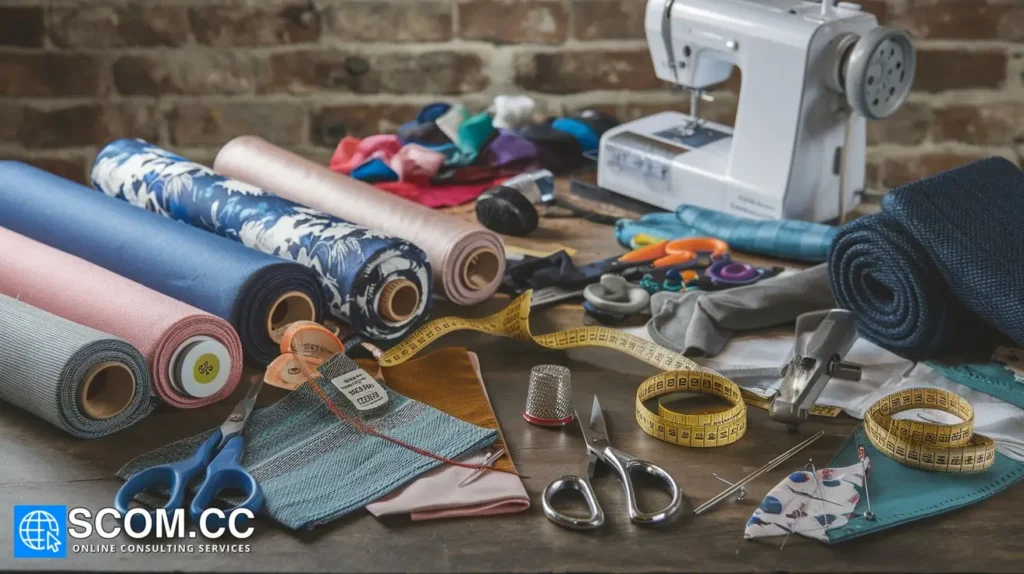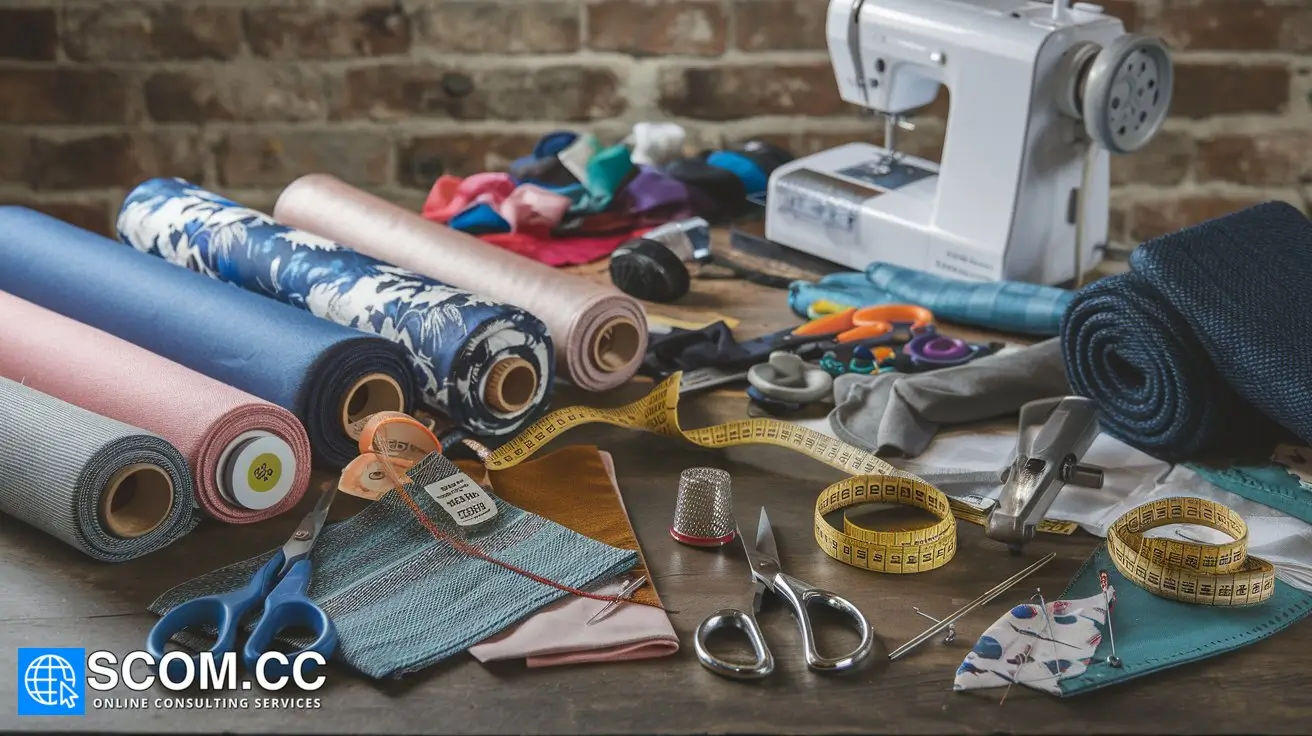How to Choose the Right Fabric for Your Tailoring Projects

How to Choose the Right Fabric for Your Tailoring Projects
Selecting the appropriate fabric is pivotal to the success of any tailoring project. Fabric choice not only influences the overall appearance but also affects the fit, durability, and comfort of the garment. In this comprehensive guide, we will delve into the factors to consider when choosing fabric for your tailoring projects, helping you make informed decisions that will elevate your creations to professional standards.
Understanding Fabric Types and Their Properties
When embarking on a tailoring project, it's crucial to have a thorough understanding of the various types of fabrics available. Each fabric type has distinct properties that affect its suitability for different types of garments. Here’s a breakdown of the most commonly used fabrics in tailoring:
1. Cotton
Cotton is one of the most versatile and widely used fabrics in tailoring. Known for its breathability and soft texture, cotton is ideal for casual wear such as shirts and blouses. It comes in various weights and weaves, including poplin, twill, and denim. Poplin is smooth and lightweight, making it suitable for dress shirts, while denim is heavier and more durable, often used for casual jackets and pants.
2. Wool
Wool is a classic choice for formal and business attire. Its natural elasticity and insulating properties make it comfortable to wear across different seasons. Wool fabrics like worsted wool, tweed, and flannel offer varying degrees of warmth and texture. Worsted wool is smooth and ideal for suits, whereas tweed provides a rugged texture suited for jackets and trousers.
3. Linen
Linen is renowned for its lightweight and highly breathable nature, making it perfect for hot weather. It has a distinct crisp texture and a natural wrinkle, which contributes to its relaxed appearance. Linen is commonly used for summer suits, casual shirts, and dresses. However, due to its tendency to wrinkle easily, it may not be the best choice for all types of garments.
4. Silk
Silk offers an exquisite shine and softness, making it a luxurious choice for evening wear and formal attire. Its drape and smooth texture enhance the elegance of garments like blouses, ties, and evening gowns. However, silk requires careful handling and maintenance, as it can be delicate and prone to staining.
5. Synthetic Fabrics
Synthetic fabrics such as polyester, nylon, and spandex are engineered to mimic natural fibers while offering additional benefits like durability and easy care. These fabrics are often used in combination with natural fibers to improve the performance of garments. Polyester, for instance, is known for its wrinkle resistance and color retention, making it a popular choice for various types of clothing.
Choosing Fabric Based on Garment Type
The fabric you choose should align with the intended use and style of the garment. Here’s how to match fabrics to different types of clothing:
1. Suits and Blazers
For suits and blazers, wool is the traditional choice due to its versatility and elegance. A well-tailored wool suit provides a polished look suitable for formal occasions and professional settings. For colder climates, consider flannel or tweed for added warmth. For a lighter option, linen blends or cotton can offer a more casual, comfortable alternative.
2. Shirts and Blouses
When selecting fabric for shirts and blouses, cotton is typically the preferred choice due to its breathability and comfort. Poplin and oxford weaves are popular for their smooth finish and durability. For a more luxurious feel, consider silk or satin fabrics, which offer a sleek, refined appearance.
3. Trousers and Skirts
Trousers and skirts benefit from fabrics that offer structure and movement. Wool and cotton are excellent choices for their balance of durability and comfort. For a more formal look, wool blends or tweed can provide the necessary structure. For casual wear, chino fabrics and denim are practical and stylish options.
4. Dresses
The choice of fabric for dresses largely depends on the occasion and style. Silk and satin are ideal for formal and evening wear due to their luxurious drape and sheen. For casual or summer dresses, cotton and linen are comfortable and breathable choices. Jersey and spandex blends offer flexibility and ease of movement, suitable for more relaxed dress styles.
Fabric Weight and Weave Considerations
Understanding fabric weight and weave is essential in achieving the desired fit and drape of your garment:
1. Fabric Weight
Fabric weight affects the drape and structure of the garment. Lightweight fabrics (e.g., crepe or chiffon) are ideal for airy, flowy garments, while medium-weight fabrics (e.g., twill or gabardine) provide a good balance of structure and flexibility. Heavyweight fabrics (e.g., tweed or corduroy) are suitable for garments requiring more durability and warmth.
2. Fabric Weave
Weave influences the texture and appearance of the fabric. Plain weave is the simplest and most versatile, often used in cotton and linen fabrics. Twill weave creates a diagonal pattern, offering enhanced durability and a unique texture, common in denim and tweed. Satin weave provides a smooth, shiny surface, ideal for silk and satin fabrics.
Considerations for Fabric Care and Maintenance
Proper fabric care ensures the longevity of your garments. Each fabric type has specific care instructions:
- Cotton is machine washable but may shrink if not pre-washed. Iron while damp to avoid wrinkles.
- Wool requires gentle handling and should be dry-cleaned or washed on a wool-specific cycle. Avoid excessive heat to prevent shrinkage.
- Linen should be washed in cold water and ironed while slightly damp to maintain its crisp appearance.
- Silk often needs dry cleaning, as it can be sensitive to water and detergents. Handle with care to avoid staining and fading.
- Synthetic fabrics are generally easy to care for and can be machine washed. They are less prone to wrinkling and color loss.
Conclusion
Choosing the right fabric for your tailoring projects involves understanding the unique properties of each fabric type, considering the garment's purpose, and evaluating fabric weight and weave. By carefully selecting fabrics based on these factors, you can ensure that your garments not only look stunning but also offer the best fit and durability. For those who take tailoring seriously, mastering the art of fabric selection is key to creating professional and high-quality pieces.

To explore more about tailoring, visit our Blog of Tailoring. If you have any questions or need assistance, go to our contact page. Additionally, you can find more information about tailoring and consulting at this tailoring and consulting portal.

Leave a Reply